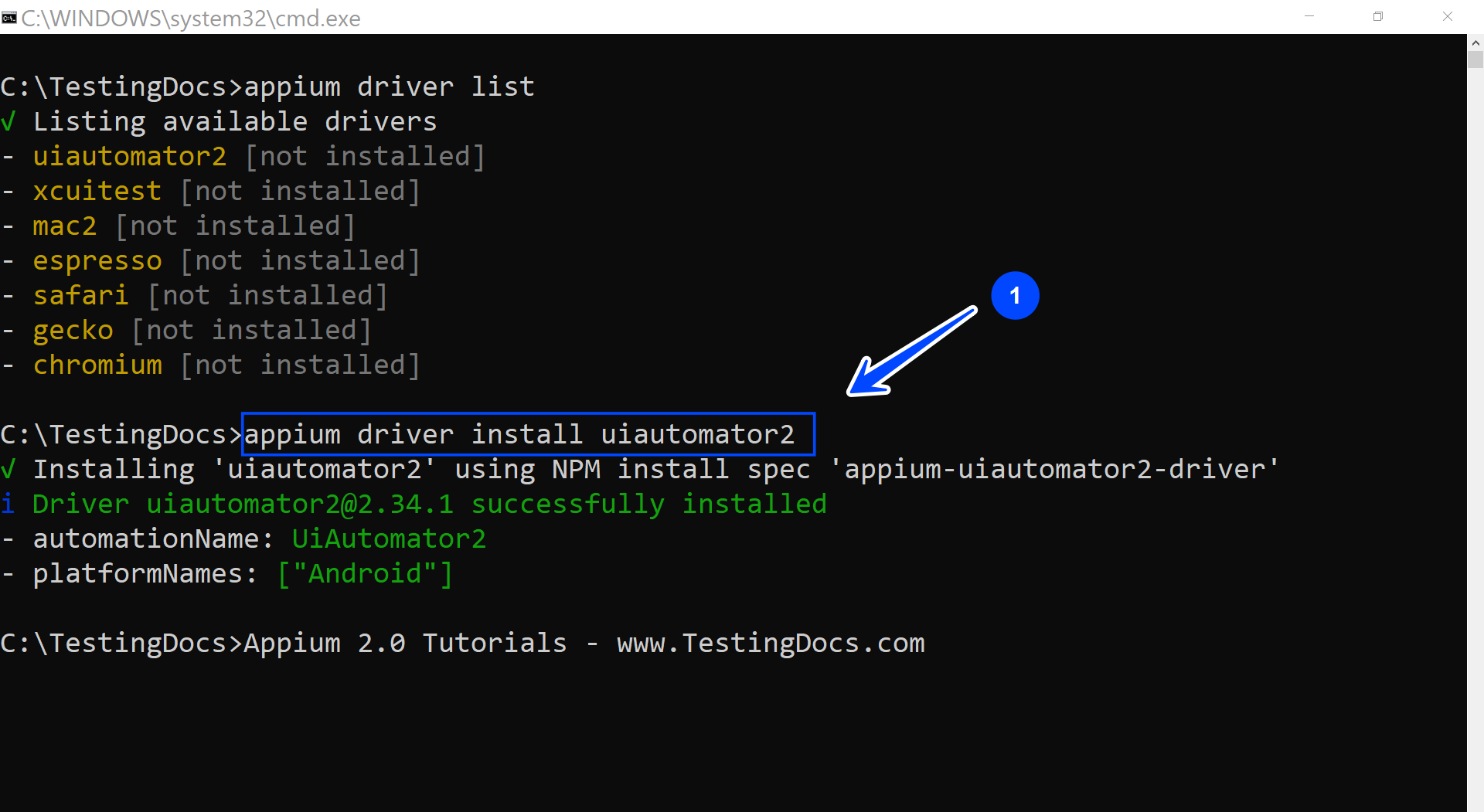Appium 2.0 Driver Installation
Changes in Driver Installation
Appium 2.0 introduces significant changes in the way drivers are installed and managed. Unlike previous versions, where drivers were tightly coupled with the Appium server, Appium 2.0 allows drivers to be installed, updated, or uninstalled independently. This modular approach enhances flexibility and simplifies driver management.
Installing Android and iOS Drivers
Let’s take a closer look at how to install Android and iOS drivers in Appium 2.0:
To know the list of drivers, use the following command:
appium driver list

Install iOS Driver
To install the iOS driver, use the following command:
appium driver install xcuitest
This command installs the iOS driver named “xcuitest.”
Install Android Driver
Similarly, to install the Android driver, use the following command:
appium driver install uiautomator2
This command installs the Android driver named “uiautomator2.”

Updating Drivers
One of the advantages of the modular driver approach in Appium 2.0 is the ability to update drivers independently. If an update is available for a specific driver, you can update it without the need to update the entire Appium server. Here’s how to update a driver:
appium driver update xcuitest
This command updates the iOS driver named “xcuitest.”
Managing Multiple Drivers
Appium 2.0 also allows you to manage multiple drivers simultaneously. You can specify multiple driver names separated by commas when updating them. For example:
appium driver update xcuitest,uiautomator2
This command updates both the iOS driver “xcuitest” and the Android driver “uiautomator2.”
In the following chapters, we will explore changes in capabilities handling in Appium 2.0 and provide examples of defining capabilities.

